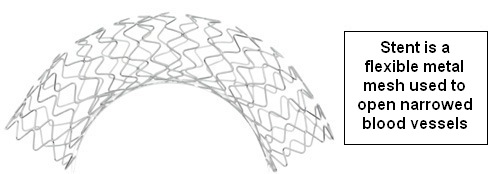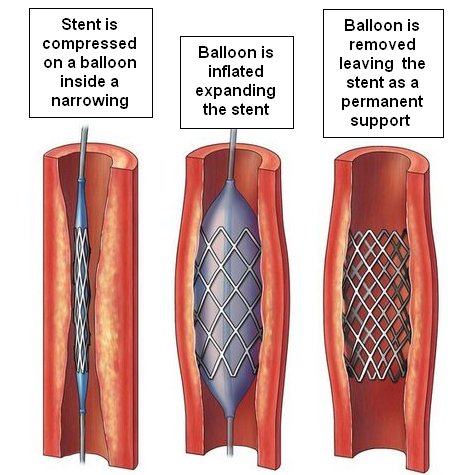Treatment options
Lifestyle changes
Lifestyle changes are the first step for anyone with coronary artery disease. These changes alone may stop the coronary disease progression. To improve your heart health:
- Do not smoke. This may be the most important thing you can do. Quitting smoking can quickly reduce the risk of heart attack or death.
- Eat a heart-healthy diet that includes fish, fruits, vegetables, beans, high-fibre grains, and olive oil. See a dietitian if you need help making better food choices or talk to your doctor about a referral to a heart rehabilitation program.
- Get regular exercise on most days of the week. Your doctor can suggest a safe level of exercise for you. Walking is great exercise that most people can do. A good goal is 30 minutes or more a day.
- Lose weight if you need to and stay at a healthy weight.
- Lower your stress level. Stress can hurt your heart.
- Avoid excessive alcohol.
Changing old habits may not be easy. Start with small steps. For example, commit to eating healthy diet. You can join a cardiac rehabilitation program that can help you make lifestyle changes. The program is run by a team of health professionals that provides education, exercise instruction, and support to help you make new, healthy habits.
Medical Treatment
Some cases are best treated with medications alone. These medicines may slow the coronary artery disease’s progress and / or ease its symptoms. There are a few common medications given to cardiac patients.
- Blood thinners are given to reduce the risk of blood clots. Aspirin is the most common mild blood-thinner and is given to most patients with coronary disease. In some cases even stronger blood-thinners (such as Plavix or Ticagrelor) are given together with Aspirin.
- Beta-blockers (such as Metoprolol or Bisoprolol) are given to protect the heart from stress, slow it down and decrease the oxygen requirement.
- ACE inhibitors (such as Ramipril) are given to lower the blood pressure and also protect the heart.
- Statins or anti-cholesterol pills (such as Lipitor or Crestor) help to lower your cholesterol and reduce inflammation. Statins cannot quickly dissolve the existing plaques or narrowings but they can slow down plaque progression.
- Nitrates improve the blood flow by relaxing the heart arteries and helping to relieve angina symptoms.
Angioplasty
Angioplasty is a procedure to improve blood flow to the heart if an artery is narrowed or blocked. In many cases it is performed after your angiogram to avoid patients having to return for another procedure. Angioplasty is also called a “stent” or “balloon” procedure. A stent is a small, expandable wire mesh tube used to prop open an artery from the inside.
During the procedure the cardiologist inserts a stent compressed over a balloon into the narrowed artery. The cardiologist will steer the stent into the narrowing, center it and inflate the balloon to press the stent in place. When the balloon is inflated, it re-expands the stent inside the artery. The stent pushes the cholesterol plaque against the artery to make more room for the blood flow.
You might feel some mild chest discomfort during the inflation of the balloon as it temporary blocks the blood flow in the artery. This will go away a few minutes later once the balloon is deflated and removed. The stent stays in the artery permanently and works to hold it open. This improves blood flow to the heart muscle and relieves symptoms such as chest pain.
There are several kinds of stents: bare metal, bio-absorable and drug coated. The type of stent used depends on the type of narrowing. Drug coated stents are the most commonly used stents. They are coated with a special drug to prevent re-narrowing of the artery.
After the procedure, anti-platelet medications are prescribed to every patient because they help prevent blood clots from forming on the stent. It is very important to take these medicines as prescribed. Call your doctor if you have any concerns about your anti-platelet medication before stopping them.
Bypass Surgery
In cases where angioplasty is not possible or there are too many narrowings: a bypass operation may be the best treatment. Coronary artery bypass grafting, or “CABG” (pronounced “cabbage”), is a common heart surgery procedure.
During the procedure a cardiac surgeon takes a section of a healthy blood vessel from your leg, chest, or arm and it is then connected (grafted) to your coronary artery slightly past the site of the blockage. This creates a new path for blood to flow around or bypass the blockage in the artery so blood can flow again to your heart.

Next article:




